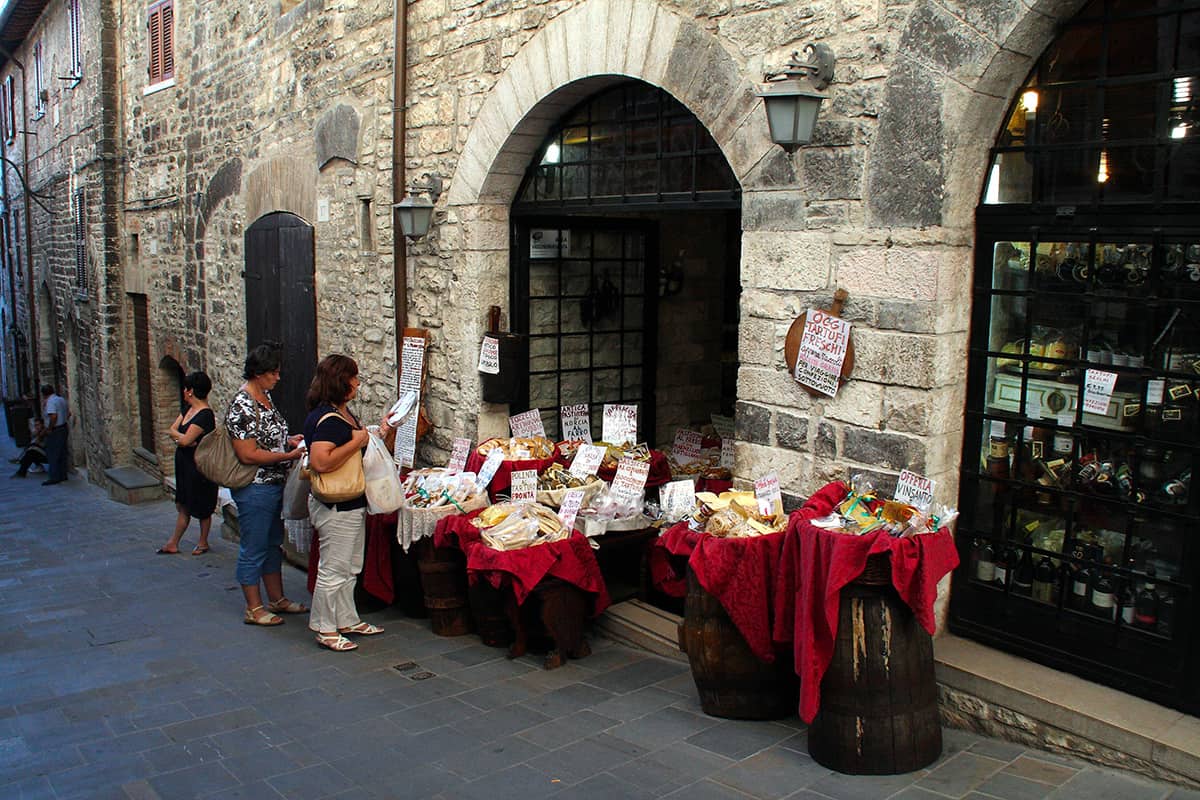Wherever you turn your eyes, in Umbria green is the background of every shot. The nuances of color tell the different natures of the soil, from the silver green of the olive trees in Spoleto valley – also called Umbra valley – to the darker one of holm oaks that cover the slopes of the Arnerino-Narnese to reach the less shiny and tobacco-like of the Val Tiberina and then rediscover the entire color range in the Martani mountains. In this natural tapestry timeless villages are set and represent the heart of places to be discovered for a journey through time.

It is the case of Gubbio, extraordinarily preserved over the centuries and dotted with monuments that testify its glorious past. Architecturally it represents the masterpiece of the two-fourteenth century society articulated in the guilds of arts and crafts and reveals itself with a compact chromatic uniformity given by the limestone blocks with which it was built: very ancient Umbrian settlement, has practically kept intact the medieval aspect.
There are five parallel streets located at different levels and connected by alleys, stairs and steps and you can start to discover the intriguing atmosphere starting from Piazza Grande, the city center of gravity which overlooks the imposing fourteenth-century Palazzo dei Consoli and the neighboring Palazzo Pretorio.

A few steps away is the Palazzo del Canonici, home of the Diocesan Museum. The cathedral, adjacent to the museum, faces the Palazzo Ducale. The discovery of Gubbio continues in via Baldassini with the “porta del morto”, a narrow overhanging opening higher up than the main door from which, according to some legends, the coffins of the dead were passed, hence the nickname.

An obligatory stop is the church of Santa Maria dei Servi, in which a “Risen Christ between Sant’Ubaldo and San Francesco” was found, signed by Raphael. Notoriety also for an event related to religiosity: it is the traditional stroke of the candles, which is renewed annually on May 15, animated by a real “participatory fever” that would be worth a visit to Gubbio, linked to the figure of St. Francis almost as much as Assisi.

In Gubbio, however, is the side of Mount Ingino from which the hungry wolf tamed by San Francesco came down and the convent of the same name is dedicated to the saint. And from the sacred to the facet you get to a delicious curiosity: in Gubbio you can take the “license of the madmen”: just turn three times around the sixteenth century “fountain of madmen” – in Largo Bargello – and be “baptized” with a spray of fountain water to acquire the honorary citizenship of the locality. Gubbio, in fact, is called “the city of madmen”, where mad stands for idealist, dreamer, free and strongly linked to the traditions and history of their land.
Villages not to be missed if you are visiting Gubbio:



0 Comment